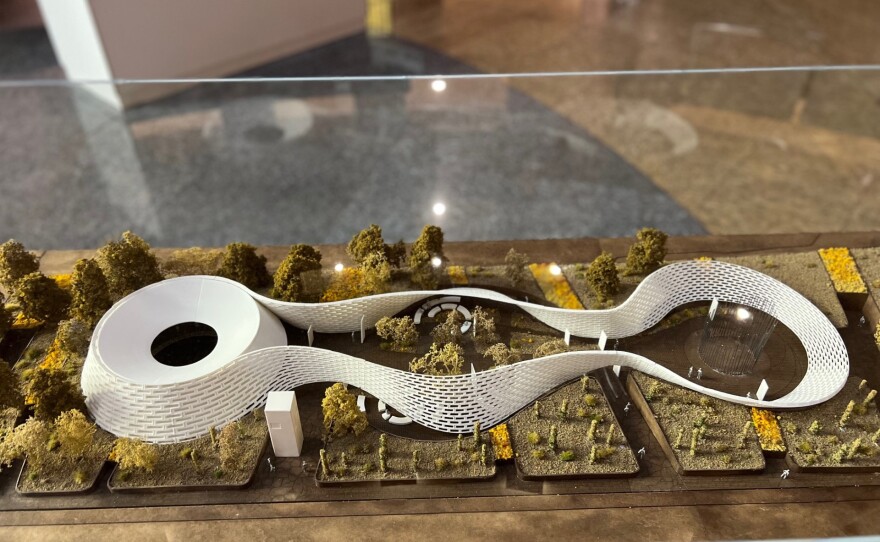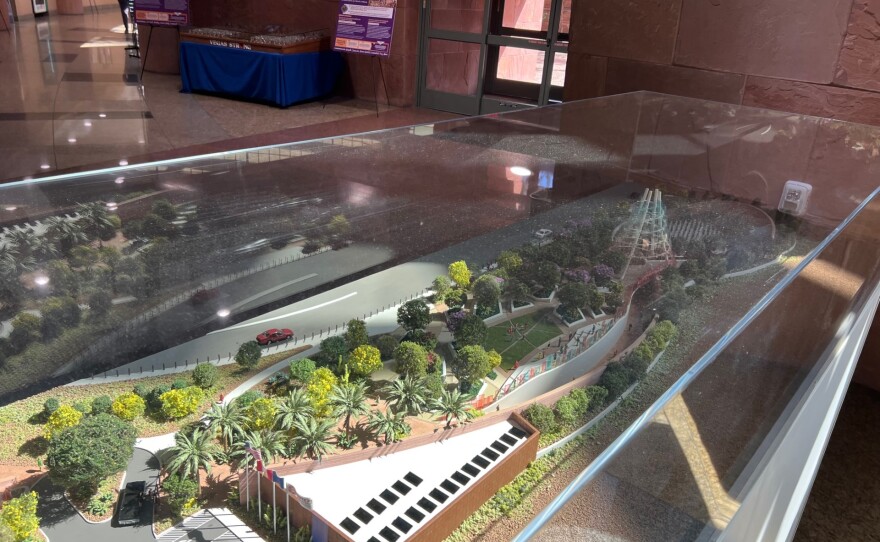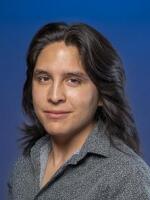UPDATE: The 1 October Memorial committee has selected a local design firm for its memorial proposal honoring those lost and affected during the Route 91 Harvest Festival shooting, still considered the worst mass shooting in U.S. history.
JCJ Architecture's concept, called "Forever One," will be recommended to be built, with a design by OLIN + Andy Scott to serve as the alternate. The JCJ design features beaming light pillars to represent the original 58 victims at the festival.
“I don’t think the healing journey is ever over for those that are impacted,” said Karessa Royce, who is a member of the selection committee and a survivor of the shooting. “My hope is that everyone goes there and feels love and light after an incredible five years."
The full site is based on the infinity symbol, intertwining the different parts of the memorial, which include a "remembrance ring,” 58 pillars and 22,000 points of light, as well as a community plaza.

The committee will present it's decision to the Clark County Commission Sept 5.
ORGINAL REPORT: A design for the October 1 memorial will be chosen soon.
After community input earlier this year, architects and designers submitted proposals for the memorial, which will honor those killed in the Las Vegas shooting on Oct. 1, 2017.
Five finalists were chosen, and their designs are on now on display at the Clark County Government Center.
The final design will be announced Wednesday, and in September, the Clark County Commission will finalize plans to move ahead with the project.
The horrific shooting galvanized Las Vegas in many ways. And a smaller memorial, which remains in downtown Las Vegas, was erected within days of the shooting.
But when it comes to this new memorial, set to be constructed on the grounds of the shooting more than 5 years ago, what do officials hope to achieve? How influential was community input, and what does a broader conversation on a memorial look like?
COMMUNITY INPUT AND POTENTIAL IMPACT
Tenille Pereira is the chair of the Clark County October 1 Memorial Committee, the committee in charge of developing the memorial. One of their biggest goals, and one that has made the process quite unconventional, according to Pereira, is the addition of significant community input. Through surveys and outreach, all five of the proposed designs have community influence.
"Our community was unique," said Pereira. "We have people from all over the world that were here that night. And we knew that there were so many different perspectives and experiences that needed to be honored. Our process was very unique, we didn't start with, 'This is what the memorial is going to look like.' We started with, 'What is important to you? What do you want to experience when you go through this memorial?' Then we ended up with five very qualified teams as a result of that. And then again, we went back to the community and said, 'Does this memorial match what the community said they wanted?' It's never been about what the committee members wanted. It's always been about what the impacted community wanted."
Bob Fielden, a longtime Nevada architect, is also a member of the committee and was instrumental in the development process given his expertise in the architecture field. However, he also emphasized the uniqueness of Las Vegas and the need to have that aspect be reflected in the final product. Fielden had goals in mind for the memorial that helped the committee know what to look for when reviewing design proposals.
"Las Vegas is a community of people that are, I think, still closely knit at large," said Fielden. "We take great pride of living here. And while Nevada and Southern Nevada are always almost on the bottom of every list that's out there in terms of education and quality of life, we're all strong defenders of that. We want to protect the city that we love so much. That's what I want this memorial to be. I think, as a planner, not just about today, but what impact and influence is it going to have twenty, thirty years from now? Is it still going to be as meaningful in the future, as it will be today? I also hope the outcome of the success of this memorial will make people around the world more aware of how disastrous these kinds of events are, and give people a sense of perspective on how important it's going to be to find some way to stop this."
How can a structure influence the way people think though? Fielden doesn't just think of himself as an architect, but an artist, as well, and he argues many architects do, too. Given that, the buildings they design can often convey a message to an audience.
"I think it's things that stick in [the audiences'] mind and stay with them," said Fielden. "And so they realize what it is not only in physical terms, but what it represents in metaphorical terms. And I think that if it can become a reminder to them, of the kind of tragedy that comes from gun violence, then I think that we're making steps in the right direction."
ARE MEMORIALS EFFECTIVE?
People are no strangers to memorials, from the 9/11 memorial in New York City, to the many erected memorials all over the world honoring the lives lost during World War II. But given our increasingly technological world, where history and knowledge are at our fingertips and where digital worlds can often take the place of our immediate physical life, it can be tempting to ask if memorials still hold a significant part in our society.
Professor Emerita of German studies at the College of Mount Holyoke in South Hadley, Massachusetts, Karen Remmler, has studied memorials and tragedy for decades. She is a firm believer in the positive impact memorials can have, especially when they're erected on the site of the tragedy.
"Increasingly, because of the virtual world that we live in, there's a need to be in contact with those who were killed at the site," said Remmler. "And in some ways, one could see this as spiritual, or as multiple belief systems, that in order to respect the dead, to provide them with the dignity of remembering them, to celebrating their lives, but also taking that space that was violated by the shooter; or in other cases by other shooters or other forms of violence. The site represents ways of creating an alternative to violence and saying, 'We will not be defeated, we will not be separated, we will not be downtrodden by this violence, we will rise up against it.' The designs also indicate a transformation of the site into a place of hope, mourning, learning, education and encounter between people who would normally not encounter one another."
Once the final design is unveiled by the memorial committee this Wednesday, the Clark County Commission will announce plans moving forward in September.
Guests: Tenille Pereira, director, Vegas Strong Resiliency Center, and chair, 1 October Memorial Committee; Bob Fielden, owner, RAFI: Planning, Architecture and Urban Design, and member, 1 October Memorial Committee; Karen Remmler, professor of German studies, Mount Holyoke College in South Hadley, Massachusetts




















